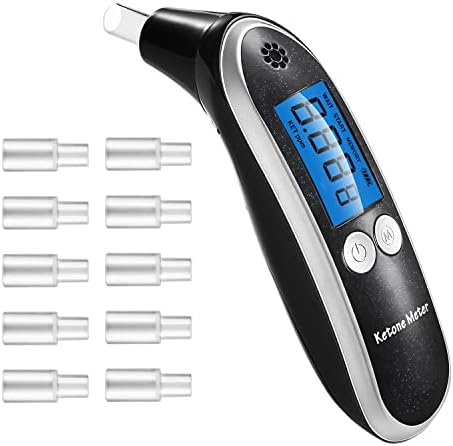When following a ketogenic diet or intermittent fasting program, it’s easy to lose track of how deep you are in ketosis. Going too far can lead to side effects like dehydration, dizziness, and in extreme cases, ketoacidosis. That’s where technology like a breath ketone meter comes in handy. You can track ketosis with a breath meter to measure acetone levels in your breath and make real-time decisions about your diet or fasting plan. Many people prefer to track ketosis with a breath meter because it’s non-invasive.
This article walks you through how to use a breath meter properly, what the readings mean, and how to adjust your fasting or keto diet accordingly for safety and performance.
Why Use a Breath Ketone Meter Instead of Blood or Urine Tests?
Breath ketone meters measure acetone—a byproduct of fat metabolism—exhaled through the lungs. Unlike blood tests (which measure beta-hydroxybutyrate) or urine strips (which detect acetoacetate), acetone shows up only when your body is burning fat consistently. Using a breath meter lets you track ketosis without prick tests.
- 80% of burned fat exits the body via breath as acetone.
- Breath acetone levels rise in real-time and reflect current metabolic status.
- No need to prick your finger or purchase strips.
How to Use a Breath Ketone Meter Correctly
- Turn on the device and let it calibrate (20-second countdown).
- Do not blow during calibration. Wait until prompted.
- Exhale into the mouthpiece for 5–6 seconds when “START” appears.
- The meter will analyze your breath and give you a reading within 10 seconds.
- Take readings at the same time daily, preferably on an empty stomach in the morning.
Tip: Avoid alcohol or sugar-free gums before testing—they can affect acetone readings.
What Do the Readings Mean?
| Breath Acetone (PPM) | Status | Action to Take |
|---|---|---|
| 0–2 PPM | No ketosis | You’re not burning fat; evaluate carb intake. |
| 3–4 PPM | Very early ketosis | Keep going—fat burning is starting. |
| 5–10 PPM | Light ketosis | Light fat burn. Maintain or slightly adjust. |
| 11–39 PPM | Optimal fat-burning zone | You are in prime ketosis. Keep steady. |
| 40–59 PPM | High ketosis – Caution | Back off slightly. Drink water. Eat more often. |
| 60–99 PPM | Danger zone – Ketoacidosis | Stop fasting. Refeed with carbs and electrolytes. |
How to Adjust Based on Your Readings
1. Under 10 PPM?
- You may need to reduce carbs further or extend your fasting window.
- Consider a morning walk to increase NEAT and stimulate fat metabolism.
2. 11–39 PPM – Optimal Zone
- Stay the course! Your body is using fat as its primary fuel source.
- Stay hydrated and make sure you’re getting enough electrolytes.
3. Above 40 PPM?
- You’re burning fat rapidly—but also at risk of dehydration and fatigue.
- Increase fluid and salt intake, reduce fast duration or refeed gently with nutrient-dense foods.
4. Above 60 PPM?
- This could indicate ketoacidosis, especially if you feel nauseated or dizzy.
- Stop fasting immediately. Eat a small carb meal, hydrate, and monitor symptoms.
How Long Does It Take to Enter Ketosis?
According to the manufacturer:
- It typically takes 48 hours to 1 week to reach ketosis.
- This depends on your diet, exercise, sleep, stress, and carbohydrate intake.
- Using a breath ketone meter helps measure progress, not guess it. Thus, you can track ketosis with breath meter more effectively.
Best Times to Use the Meter
- Morning, fasted state: Most accurate snapshot of fat metabolism.
- Post-exercise: Indicates how workouts are affecting your metabolic state.
- Before meals: To assess if it’s time to break your fast.
Key Takeaways
- A breath ketone meter is a real-time tool for monitoring fat burning and ketosis during a fast or ketogenic diet.
- Acetone readings correlate with how effectively your body uses fat for energy.
- Optimal range (11–39 PPM) equals strong, sustainable fat loss.
- Use readings to adjust your diet or fast—not just follow a static plan.
Subscribe now and get a 14-day free trial workout app for iPhone users.





